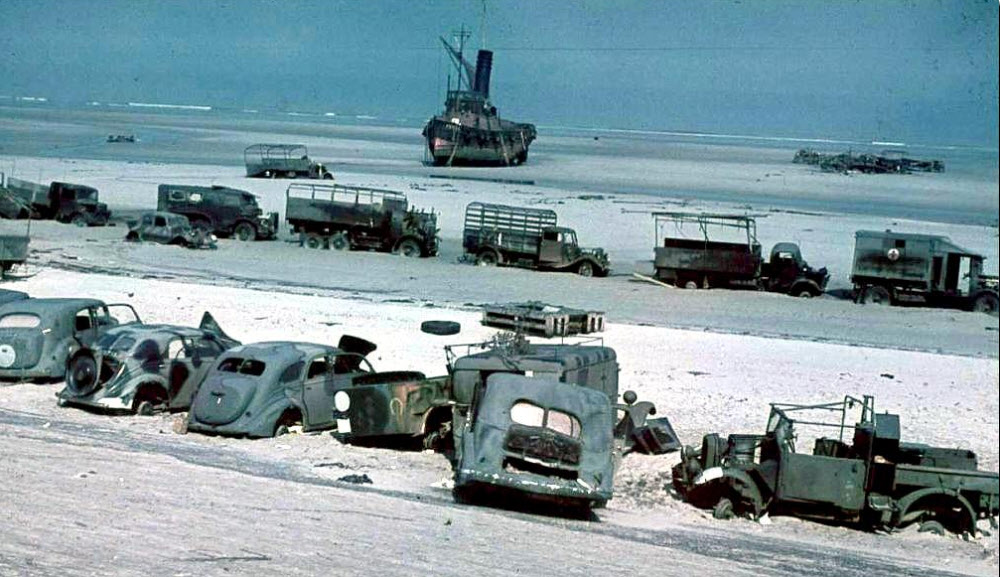
Ernest Wainwright was born in spring 1921, the second of five sons born between 1920 and 1925 to Wilfred and Alice (nee Stephenson) who married at Ossett Holy Trinity Church on the 23rd August 1919. Wilfred, a bachelor, was aged 29 years, working as a labourer and living at 6, Wakefield Road, Flushdyke, Ossett and Alice was 26 years of age of 6, Workhouse Yard, Flushdyke, Ossett. Wilfred was born in Howden Clough, Batley in late 1890, but by the time he was 7 months old he was living with his parents on Wakefield Road, Ossett.
In 1901 the family were living at Old Workhouse, Flushdyke, Ossett and by 1911, Ernest, aged 20 years was lodging at 21, Hilda Street, Ossett and working as a contractor’s labourer. His wife to be, Alice Stephenson, was one of seven surviving children and in 1911, Alice was the eldest of five children, four daughters and one son, living with their parents in a two roomed house at Ward’s Yard, Dale Street, Ossett.
In 1939, Ernest’s parents, Wilfred and Alice, were living at 3, Garth Villa, Wakefield Road, Flushdyke, but there is no sign of Ernest living in the household. However, since he would be only 18 years of age at this time, it is likely that he would have lived at this address during his young life.
Throughout WW2, the 2nd/4th Battalion of KOYLI served in the 138th Infantry Brigade of the 46th Division, and was the first in action in France in 1940. It was then a partially-trained L. of C. unit in the GHQ Reserve where Major-General H. C. Curtis was in command of the 46th Infantry Division.
In April 1940, seven months after the outbreak of the war, the 138th Infantry Brigade, commanded at the time by Brigadier Edward John Grinling, DSO, MC, TD, a Territorial Army officer, and division, minus the artillery, engineers and other support units, were sent to France to join the British Expeditionary Force (BEF). The ‘division’, sent at the same time as the 12th (Eastern) and 23rd (Northumbrian) divisions, was very poorly equipped and trained, so was assigned mainly as a labour and training unit, to build defences and construct airfields. Armed with rifles and a few Bren guns, they fought a rear-guard action on the Seine after the Battle of Dunkirk when fighting the German Army, before eventual evacuation in Operation Ariel from Cherbourg and St. Nazaire in June 1940. It was during this rearguard action, having been cut off by the Germans and not being evacuated at Dunkirk that Private Ernest Wainwright lost his life. The poorly trained and poorly equipped 2nd/4th Battalion of KOYLI stood no chance against the onslaught of the German Army who succeeded in pushing the British Expeditionary Force out of Europe and back to England with many casualties. These were Britain’s darkest days in WW2, and especially so for the parents of Ernest Wainwright.

Above: Abandoned British Expeditionary Force vehicles at Dunkirk May/June 1940 after the evacuation of British troops back to England.
Private Ernest Wainwright died between the 9th June 1940 and the 23rd June 1940, aged 19 years, the son of Wilfred and Alice Wainwright, of Ossett, Yorkshire. He is buried at grave reference VI. F. 11 in St. Desir War Cemetery, Calvados, France. St Desir is a village on the N13 to Caen, 4 kilometres west of Lisieux. The war cemetery is about one kilometre west of the village and lies on a secondary road, the D159.
The Allied offensive in north-western Europe began with the Normandy landings of the 6th June 1944.
St Desir War Cemetery is the most easterly of the the Normandy cemeteries. For the most part, those buried here died in the final stages of the campaign, in pursuit of the German forces towards the Seine. The cemetery contains 598 Commonwealth burials of the Second World War.
78 of these graves were brought in from Chartres (St Cheron) Communal Cemetery after the war, together with the four First World War burials now at St Desir.
References: